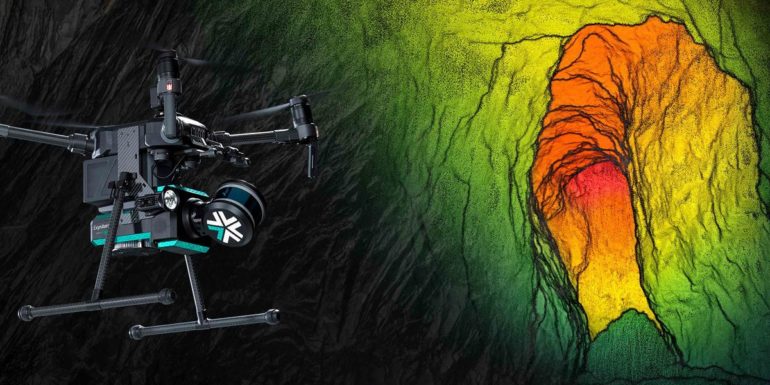A company that develops autonomous drone technology for industry and defense achieved a milestone heretofore reserved for land-based vehicles: Level 4 autonomy. This appears to be the first successful demonstration of level 4 autonomy in an aerial system.
We’ve tracked the company, Exyn Technologies, particularly its national defense aspirations. As I wrote in early 2020, Exyn began developing for the enterprise and is active in sectors like oil and gas and infrastructure inspection. The company’s drones are designed to work in complex, GPS-denied environments where unknown terrain and uncertain ground conditions can make flying perilous. This mission brief has also led Exyn to explore defense industry applications.
At Level 4A Autonomy, Exyn’s drones are now capable of free-flight exploration of complex spaces at speeds of two meters per second or later while collecting data from the environment.
“Exyn’s latest technology demonstration pushes the boundary of what can be done with autonomous flying systems in situations where GPS is not available. Getting aerial systems to fly reliably in cluttered environments is extremely difficult and manual piloting in underground settings is often impossible.” said Camillo J. Taylor, Raymond S. Markowitz President’s Distinguished Professor, Computer and Information Science Department at University of Pennsylvania. “Having a solution that allows human operators to task these systems at a very high level without needing piloting expertise opens up a number of applications in autonomous inspection of mines and other critical infrastructure.”
UAV have a considerably more difficult task achieving useful autonomy than their terrestrial counterparts. Whereas defined roads offer a somewhat structured environment, complex three-dimensional spaces require near-instantaneous responsiveness and path mapping within three axes. Drones also have limited payload capabilities, making the challenge of equipping them with complex sensor suites and computing power all the more challenging.
“People have been talking about Level 4 Autonomy in driverless cars for some time, but having that same degree of intelligence condensed onboard a self-sufficient UAV is an entirely different engineering challenge in and of itself,” said Jason Derenick, CTO at Exyn Technologies.
“Achieving Level 5 is the holy grail of autonomous systems—this is when the drone can demonstrate 100% control in an unbounded environment without any input from a human operator whatsoever. While I don’t believe we will witness this in my lifetime, I do believe we will push the limits of what’s possible with advanced Level 4. We are already working on attaining Level 4B autonomy with swarms, or collaborative multi-robot systems.”
Currently, Exyn is commercializing industrial-grade drone autonomy with customers in mining, construction, and logistics, and its new Level 4 autonomous capabilities will come online in the next few months. But military applications could become more prevalent as well.
“We’re most proud of our robots’ ability to identify threats, reduce operational risks and save soldiers’ and civilian lives in unknown and volatile situations,” Nader Elm, CEO of Exyn Technologies, commented last year. “Now you can send a drone to perform highly sensitive missions that are far too dangerous for human soldiers, and acquire data that is unprecedented in its level of detail, accuracy and timeliness.”
